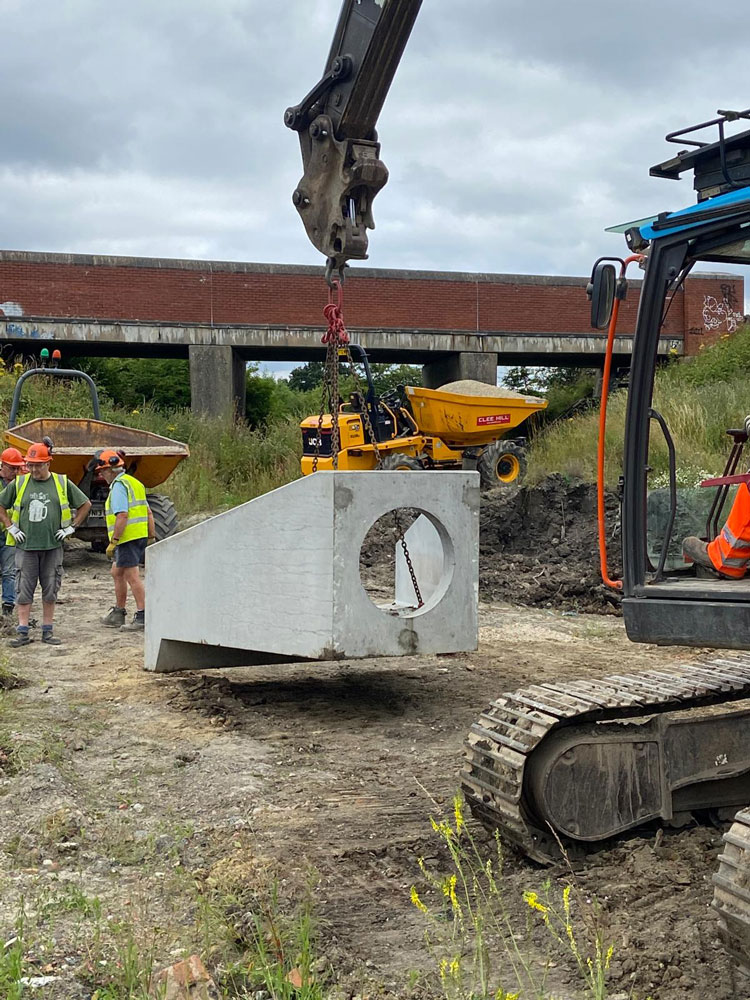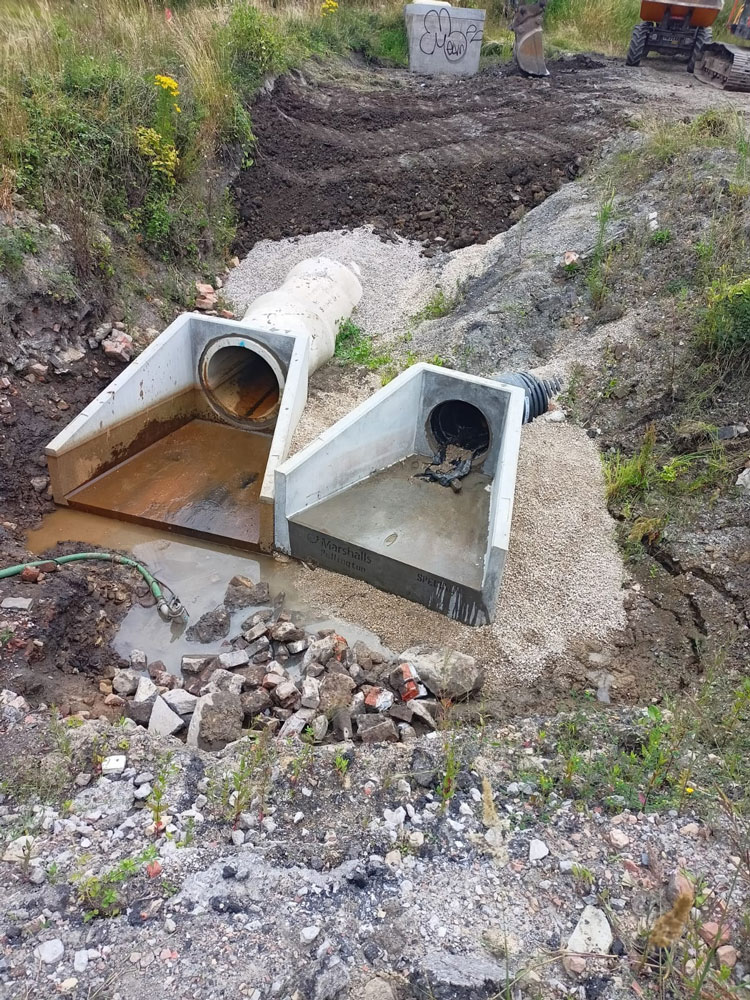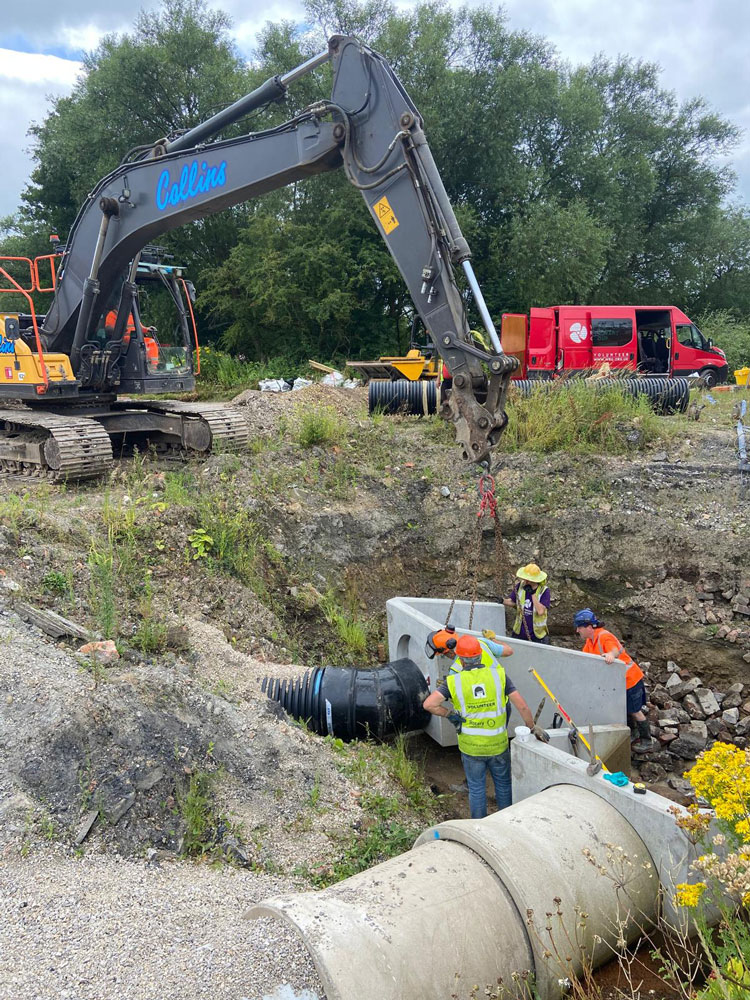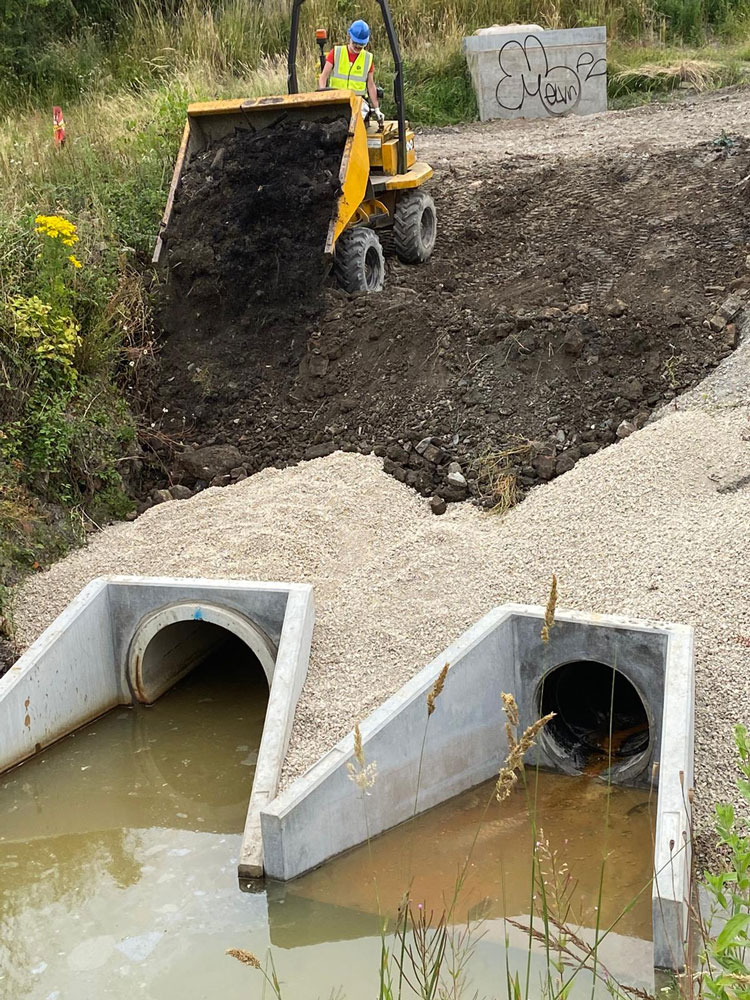WRG at Beggarlee July 2024
A group of eleven WRG (Waterway Recovery Group) volunteers came back to Beggarlee on the 19th July to continue the uncompleted work on the 600mm headwall and to create a flood channel extension. The group came from Leicestershire, Northamptonshire and a couple from London
Two days before their arrival, the stakes marking the area were again checked using a GPS positioning device.
The day before they arrived, an environmental survey, was carried out for Amber Valley Borough Council to ensure the area was ok to work, it was.
The digging out of the flood plain extension, is necessary to compensate for land that will be taken when the channel and locks are built.
Two archaeologists were on site during the digging out of the flood plain, just in case anything was discovered, which was the case with the old original lock (Marshalls Lock) appearing.
Before the main job of digging the flood plain extension, there was the finishing off of the 600mm headwall installation, left from last November because of bad weather and machine breakdown. After installation the headwalls were backfilled and compacted to a level to allow heavy machinery on to the flood plain.
At the 600mm manhole chamber, work was carried out to place an additional 700mm section on the chamber and the area around built up with material from the flood plain dig. This. will have to be done once more to bring the chamber height up to the finished height for the embankment of the canal channel. The area was compacted continually with the 13ton vibrating compactor with a front roller built with multiple tines on.
On the flood plain, working to the stakes marking the area, the diggers dug out the far end of the extension, removing the spoil in the dumpers and then profiling the top edge and bringing the bottom level to the correct height. There was a little bit of concern about not finishing to schedule, so some very long hard days were put in. This concern grew when the original Cromford Canal lock (Marshals Lock) was uncovered, which slowed progress a little. It was thought that the lock would be uncovered because of GPS positioning and comparison with old maps. It has been estimated that 2500 & 3000 tons of hard clay earth had been moved in the week.
Malc Chisnall and Ian Hutchinson were on site the entire week with WRG’s visit, to ensure equipment was fuelled up and put in the work area from the secure compound in Wernicks yard before WRG arrived every morning and ensured a prompt start. On three mornings they were both on site at 6.00am and didn’t leave until everything was back in the yard at 7.00pm, some very long days. One day, it was vital that all the equipment was out early, because Wernick’s were delivering some very large units they had built, so the area had to be clear for trucks to manoeuvre into position to load.
Neil Cuthbertson one of our FCC work party volunteers finished his training on large diggers on the Wednesday and so gave many useful hours loading the diggers which helped with the schedule. After the WRG left on the Saturday, the FCC group set to removing tree stumps and placing them to make wildlife habitats.
The position of the planned work at the end of the visit, is that some more work is to be completed by FCC volunteers to clear the area around the old lock and towards the 900mm chamber. mainly to remove more tree stumps and roots.
WRG may be able to come back for a long weekend in September to create the two runoff channels, one at each end of the new compensation area. These will allow flood water which gathers in the channel, to gradually drain down to the Erewash.
Equipment used: two, six-ton dumpers, a 13ton vibrating compactor, a small hand operated vibrating compactor of about half a ton weight, several diggers of various sizes and of course the tea urn. A fuel bowser was also hired to fuel the equipment every day using just under 1000 litres of diesel. The FCC dumper, has been hard at work in the week and I think it will have to have some TLC on the gearbox, judging by the sound when in second gear, that machine has been a really inspirational buy at the insistence of the late John Baylis.
WRG have a cook with them on all these site visits and on this visit, Martine Hearnden was the cook. She is the wife of one of the volunteer’s “Moose” Hearnden, why he is called “Moose” I have no idea. She is the boss. Not only did she cook breakfast and the evening meal in the Anvil Social Club in Ironville, she came on site to cook mid- day meals and snacks. In mid-afternoon she would disappear off site, go shopping and then cook the evening meal. This lady was an absolute star, she put in 90 hrs in the week looking after all the meals, she is to be applauded.
“Moose” is the site supervisor controlling work, movements and training. Ian Neil and Malc received further training on various pieces of equipment, all three passed and have licences to operate Diggers, Dumpers and Compactors of various sizes.
Pete Fleming, one of WRG’s organisers, concentrated on technical issues throughout the week and there were plenty to keep him occupied.
The group were again billeted at the Ironville Church Hall and seeing several camper vans in the car park, I think some were sleeping in those, within easy reach of the bar.
The WRG gave 606.25hrs with 87 travel hours at Beggarlee in July, the FCC volunteers of which there were five some days, gave 316.5 hrs with 34 travel hours.
The combined hours given to the Beggarlee project since the start several years ago up to the end of July 2024, is 5120.25 hrs.
Thanks go to Ian Hutchinson, Malc Chisnall, John Barker for helping construct this article.
Thanks, also go to Wernick’s company and staff at Beggarlee for allowing the secure storage of the plant and equipment.
John Guyler, August 2024




